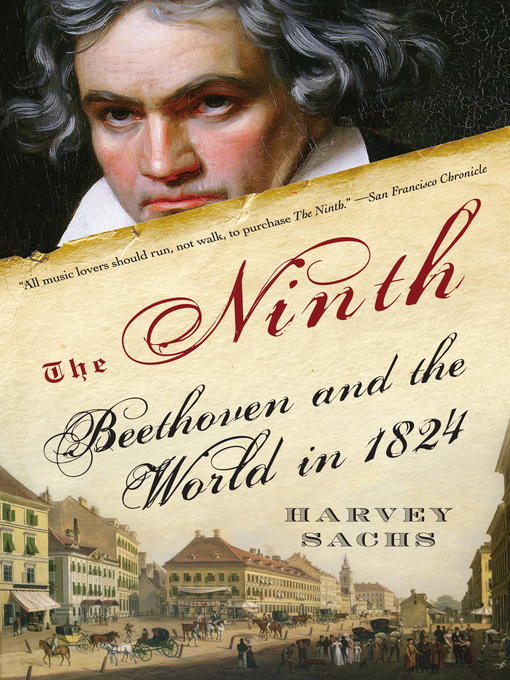
The Ninth
Beethoven and the World in 1824
کتاب های مرتبط
- اطلاعات
- نقد و بررسی
- دیدگاه کاربران
نقد و بررسی

Starred review from February 15, 2010
Beethoven wasn't always a cultural icon. At least one critic attending the 1824 premiere of his Symphony No. 9 in D Minor likened what he heard to a “hideously writhing wounded dragon.” Just why the composer and his works endure is the question behind this absorbing book by music historian Sachs (Toscanini
). Through detailed musical analysis and condensed readings of cultural politics and 19th-century history, Sachs ponders “what role so-called high culture played, plays, and ought to play in civilization.” Using the year 1824 and the premiere of the Ninth as ground zero, Sachs reviews the literary, artistic, and social movements of the time, noting how Beethoven's innovative symphony (the first with a vocal score) and its themes of equality and redemption no doubt challenged the resurgent conservatism among Europe's monarchies. Sachs places Beethoven alongside Pushkin, Byron, and other prominent romantics, whose talents he finds linked to a common quest for freedoms—political, artistic, and “above all of the mind and spirit.” After first presenting the Ninth as a Viennese social event and then as emblematic of Beethoven's artistic process, Sachs shines with a close reading of the Ninth's musical score, interpreting its techniques and emotive narrative. Readers will want a recording nearby. In the book's last chapter, Sachs deals with the impact and legacy of Beethoven's masterwork and explains what makes his music universal.

January 15, 2010
By concentrating on the year Beethoven debuted his most famous work, Sachs ("Rubinstein: A Life") sets the symphony in its historical context, as the composer, along with fellow revolutionaries elsewhere in Europe (e.g., Lord Byron, Alexander Pushkin, Eug]ne Delacroix, Stendhal, Heinrich Heine), championed equality in the face of widespread political oppression. Sachs draws together the major influences in the political and artistic worlds of the early 19th century as a way of highlighting the importance of Beethoven's monumental work. His discussion ranges from large historical concepts to detailed analyses of specific works of art, politics, and musical compositions, which serves to paint a vivid picture of the intense artistic life of the period. VERDICT There is a bit of technical discussion that requires music theory background, but the bulk of the narrative is eminently readable, insightful, and often very personal. A thought-provoking, broadly based, well-informed discussion that should appeal to well-educated general readers as well as music specialists.Timothy J. McGee, Trent Univ., Peterborough, Ont.
Copyright 2010 Library Journal, LLC Used with permission.

February 15, 2010
On May 7, 1824, the premier of Beethovens ninth and last symphony pushed symphonic music into Romanticism. Napoleon had been overthrown. Byron, Pushkin, and Stendhal had advanced poetry and prose fiction; Delacroix, painting. Maturing as such political and artistic ferment mounted, Beethoven had discovered the Ode to Joy of Romantic literary forefather Friedrich Schiller 30 years earlier and employed it to sum up his art. Sachs discusses each movement of the Ninth in detail, from the terror and despair of the first to the anger and acceptance in the second to the peace of the third. The fourth begins with quotations from the its predecessors. Then, the bass vocal soloist interrupts to launch the movement into joy and hope. The Ninth influenced all subsequent nineteenth-century composers, who from Berlioz to Meyerbeer to Wagner built upon the foundations laid by Beethoven. This discussion of the cornerstone of Romantic music, whose influence extended deep into the twentieth century, is concise, thorough, and written from the heart of a great biographer, musicologist, and lover of fine music.(Reprinted with permission of Booklist, copyright 2010, American Library Association.)

























دیدگاه کاربران